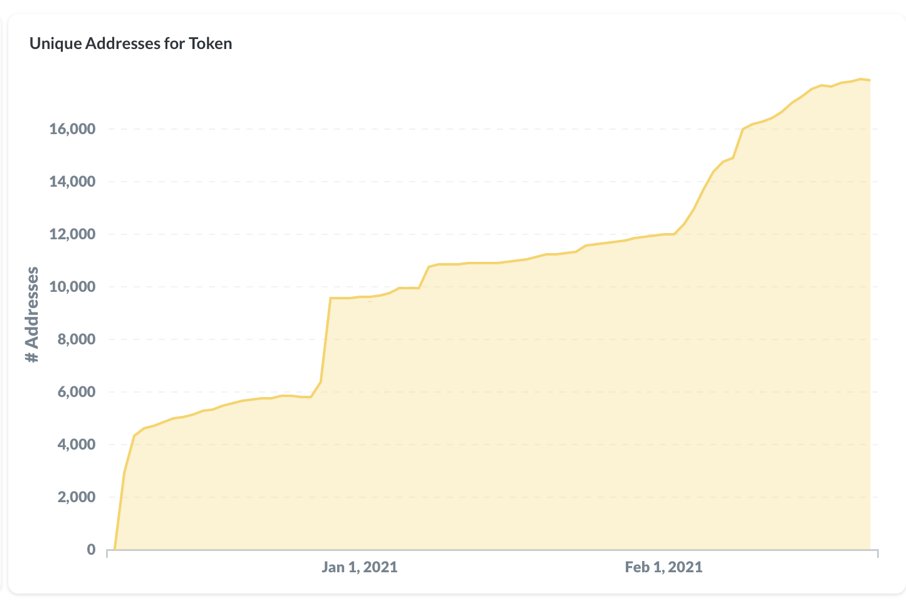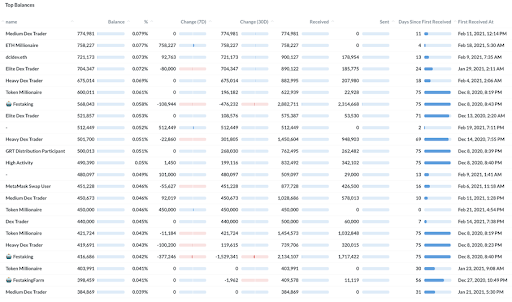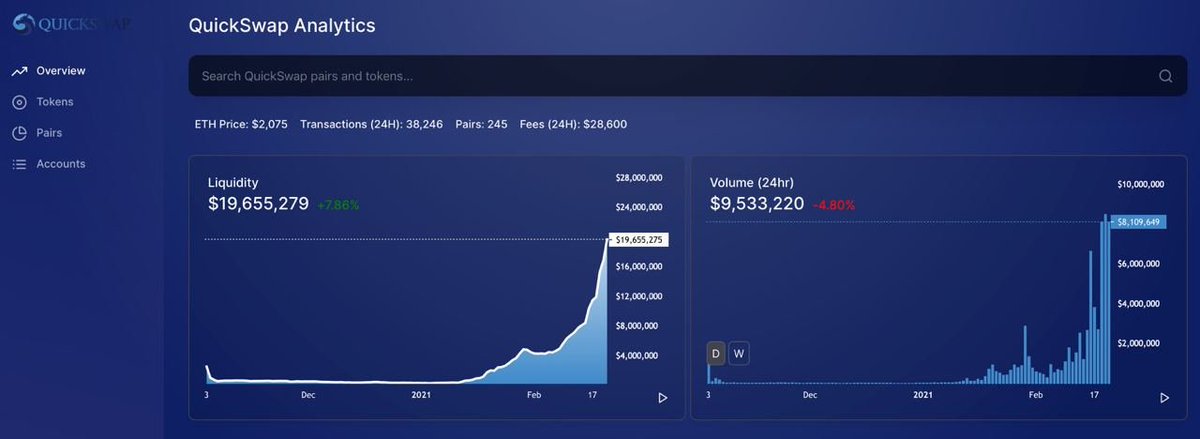
1/ @Polkadot $DOT #parachain
With all the excitement around the upcoming launch of parachains, I thought it would be a good time to do a TLDR on what they are, how they work, some of the main projects launching parachains, and how all of this will co-exist with other chains...
With all the excitement around the upcoming launch of parachains, I thought it would be a good time to do a TLDR on what they are, how they work, some of the main projects launching parachains, and how all of this will co-exist with other chains...

2/ At its core, @Polkadot will be an infrastructure layer for Layer 1 blockchains, with a Relay Chain acting as a base security layer (a “Layer 0” chain) and multiple parachains (parallel chains) attached to this Relay chain and benefiting from its security and interoperability.
3/ This is similar to an ETH 2.0 type sharded network, but while on ETH 2.0 all shards will be substantially similar, on Polkadot each parachain can be completely different, using different consensus mechanisms, different (or no) native tokens, or concentrating on specific apps.
4/ While Polkadot is already a major project in terms of MCap, for now its blockchain is only a “skeleton chain”, which can validate transactions and governance, but without any additional logic or applications built on it. This will all change when parachains are implemented.
5/ The Relay Chain is expected to support around 100 parachains, and these will cover a large range of applications such as smart contract platforms, cross chain bridges, DeFi optimised chains, oracle platforms, privacy chains, etc.
6/ Parachains will have their transactions processed and organised into blocks by “Collator” nodes, which will then send these blocks and the chain’s state transition proofs for final validation by the Relay Chain validators. 

7/ Thanks to @substrate_io, an open-source set of tools and libraries developed by @ParityTech, devs can easily build @Polkadot compatible parachains. And thanks to XCMP, Polkadot’s “Cross Chain Message Passing” protocol, these parachains can easily communicate with each other.
8/ Add to that Polkadot’s focus on cross chain bridges with other existing chains such as ETH, BTC or @cosmos (parachains offering such cross-chain bridges are considered “Public Utility” Parachains), and this creates a truly interoperable ecosystem.
9/ In order to understand parachain's roll-out plans, let’s first explain what is @kusamanetwork and Rococo. Kusama is a “canary network” for Polkadot, meant for experiments and testing of new features before they are implemented on Polkadot. And Rococo is Kusama’s testnet.
10/ So parachains currently are undergoing testing on Rococo and are expected to start being deployed on Kusama in the coming weeks. And once they are running smoothly on Kusama, they will then be implemented on Polkadot, likely during Q2.
11/ Note that @kusamanetwork itself is far from being a “testnet” network as $KSM’s current $2.8bn MCap clearly shows, so the deployment of parachains on Kusama will already be a major milestone and an actual “go live” for many of the projects deploying parachains.
12/ And how are the parachains slots allocated?
As previously alluded, some parachains will be considered public utilities and will be granted free slots through governance. These may offer cross chain bridges, governance, stable coins..and will use $DOT as their native token.
As previously alluded, some parachains will be considered public utilities and will be granted free slots through governance. These may offer cross chain bridges, governance, stable coins..and will use $DOT as their native token.
13/ The remaining parachain slots will be allocated through auctions, where each project will bid with the amount of $DOT that they are willing to lock-up (or bond) during the period where it will be a Parachain (the winning bidder secures a slot of between 6 and 24 months).
14/ Because this $DOT is not paid per se, but only locked for a period of time, most projects will finance the auction costs though a crowd-loan mechanism, where they will give their platform tokens in exchange for a $DOT loan from participants (a “Parachain Loan Offering”).
15/ Having said all this, the best way to get an idea of what the Polkadot parachains ecosystem will look like is to go through some of the main projects expected to take parachain slots.
A good starting point for going deeper into the parachains rabbit hole:-
A good starting point for going deeper into the parachains rabbit hole:-
16/ @MoonbeamNetwork will be an Ethereum EVM implementation using @substrate_io, that aims to be the lowest friction way for Ethereum projects to deploy on Polkadot.
Projects already working with Moonbeam include @sushiswap, @idexio, @oceanprotocol, @chainlink and @BandProtocol
Projects already working with Moonbeam include @sushiswap, @idexio, @oceanprotocol, @chainlink and @BandProtocol

17/ @AcalaNetwork will be a #DeFi hub for Polkadot. A blockchain optimised to provide a better user experience for DeFi, with a built-in stable coin, built-in Dex, lending/staking protocols, customised gas payments, etc (check out their testnet app here: apps.acala.network)
18/ @centrifuge is bridging real world assets into DeFi, allowing tokenised asset pools to be used as collateral for DeFi, or stable coin deposits to earn yield from real world assets. They have partnerships with @MakerDAO and @AaveAave for the implementation of such products.
19/ @EquilibriumDeFi, a cross chain money market, incl. cross chain lending platform, cross chain liquidity pool, dex, synthetic asset platform. Partnership with @CurveFinance.
@polkaBTC and snowfork.substack.com: bridges connecting Polkadot to Bitcoin and Ethereum blockchains
@polkaBTC and snowfork.substack.com: bridges connecting Polkadot to Bitcoin and Ethereum blockchains
20/
@Plasm_Network: scalable dApps platform
@PhalaNetwork: privacy-preserving cloud computing service
@CrustNetwork: decentralised storage network
@hydra_dx: cross chain liquidity protocol
@litentry: cross chain identity protocol
@DarwiniaNetwork: cross-chain bridge protocol
@Plasm_Network: scalable dApps platform
@PhalaNetwork: privacy-preserving cloud computing service
@CrustNetwork: decentralised storage network
@hydra_dx: cross chain liquidity protocol
@litentry: cross chain identity protocol
@DarwiniaNetwork: cross-chain bridge protocol
21/ These are just a small subset of the projects aiming for a parachain spot, but it gives us a general idea that this will be a world of bridges and interoperability, not only among parachains, but between the Polkadot ecosystem and other chains such as ETH and BTC
22/ On the question for what all this could mean for Ethereum, we can see from the focus on cross chain solutions and interoperability, this is an ecosystem that is intended to co-exist and communicate with Ethereum and not be an “Ethereum killer”.
23/ Additional evidence of this is the fact that most existing ETH projects deploying on Polkadot (e.g through Moonbeam) or partnering with Polkadot projects (like MakerDao, Aave, Curve), are far from leaving ETH for Polkadot, but will co-exist and communicate on both ecosystems
24/ A few links for those who are interested in learning more:-
Polkadot wiki: wiki.polkadot.network/docs/en/gettin…
Polka DeFi Ecosystem overview: parity.io/defi-on-polkad…
Projects Directory: dotspot.io/projects/
Zero Knowledge Podcast on Polkadot: zeroknowledge.fm/171
Polkadot wiki: wiki.polkadot.network/docs/en/gettin…
Polka DeFi Ecosystem overview: parity.io/defi-on-polkad…
Projects Directory: dotspot.io/projects/
Zero Knowledge Podcast on Polkadot: zeroknowledge.fm/171
• • •
Missing some Tweet in this thread? You can try to
force a refresh









